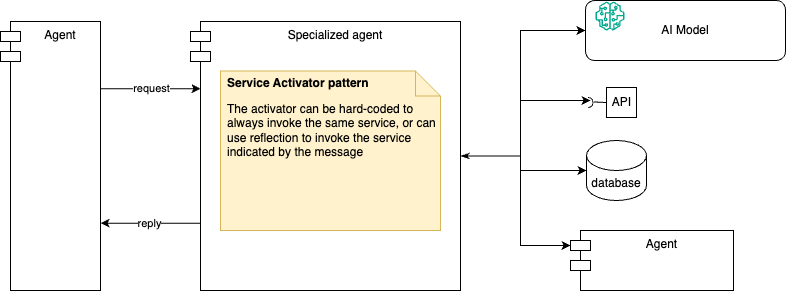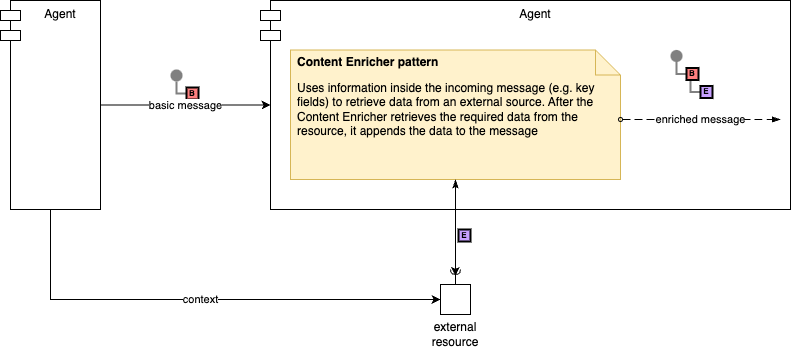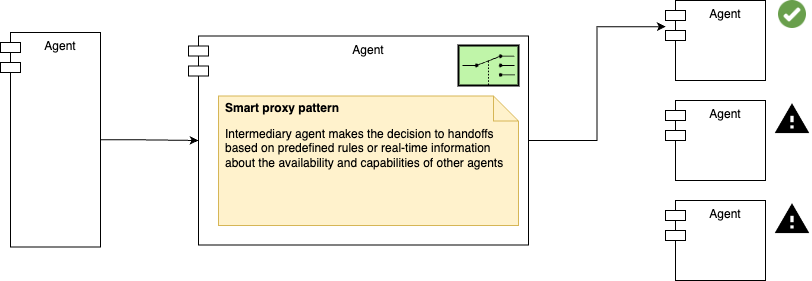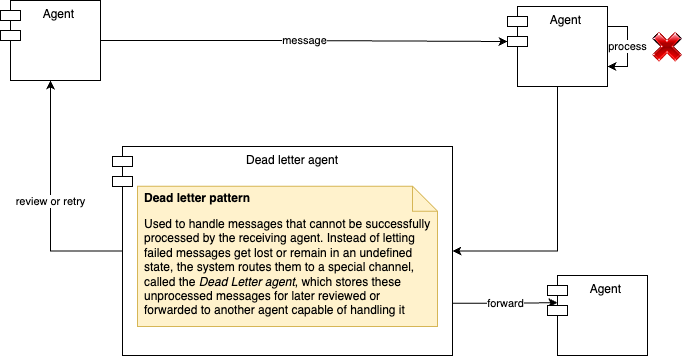When we talk about agent handsoffs in a message-based interaction system, we are describing a fundamental process that enables the delegation of responsibilities between distributed components. In this context, agents represent software components that process messages or requests, while handsoffs allow messages to flow from one agent to another based on the system’s context and needs.
In a distributed system, handoffs decouple problem-solving from the agent that originally received the request. Instead of forcing an agent to retain responsibility for a conversation throughout its lifecycle, the transfer allows it to delegate that responsibility to another agent that may be better equipped or more available to handle the task.
Agent transfers enable a flexible, scalable distributed system where tasks can be delegated to the most specialized or available agents at any moment.
Table of contents
Open Table of contents
Decomposing responsibilities: agent specialization
Complex systems, such as agent networks, are often organized around specialized components that handle a specific subset of the system’s tasks. In terms of integration patterns, this aligns with the Service Activator pattern, where an agent (or service) is activated to process a particular task.
In this context, an initial agent may not have access to the necessary tools or specific knowledge to resolve an issue. Instead of attempting an incomplete solution, it transfers the conversation to a specialized agent. The transfer is not merely a handoff, but a semantic handover: the message, along with its context, is sent to an agent better suited to make decisions about how to continue processing. This is crucial in distributed architectures where specialization drives efficiency.

State management in handoffs
In asynchronous messaging systems, each agent handles its own local state, but when a message or conversation is transferred, part of that state must be shared or “embedded” in the message being transferred. This process is analogous to the Content Enricher pattern, where state or context information is stored externally, and a “enriched data” is attached to the message. The receiving agent can then use that enricher component to retrieve the relevant context and continue processing.
This separation of the conversation from the agent’s internal state allows for efficient handoffs without the need for complex state sharing between agents. It also makes the system more scalable, as each agent can handle multiple conversations without overloading its local memory.

Context-based handoffs: flexibility in decision making
The system must also be flexible regarding when and how a handoffs occurs. The transfer process can be controlled through predefined rules or dynamically based on the agent’s state or the conversation’s conditions. In this sense, handoffs should not be seen as a simple movement of messages between agents but as an informed decision based on context. Here, a pattern like Smart proxy can be applied, where an intermediary agent makes the decision to handoffs based on predefined rules or real-time information about the availability and capabilities of other agents.
For instance, if an agent faces a case requiring a service it cannot access, the agent can act as a smart proxy, transferring the conversation to another agent with the necessary tools to complete the task. This dynamic routing enables the system to optimize resource use, ensuring that each task is handled by the most suitable agent at the right time.

Robustness in handoffs: retaining responsibility
Finally, it is crucial that a system allowing agent handoffs maintains robustness in the face of potential failures. A handoffs should not imply that the transferring agent loses all responsibility for the message. Instead, a pattern like Dead letter agent can be implemented, where the receiving agent takes control of the conversation, but the system must include mechanisms to handle potential errors or exceptions in case the receiving agent is unavailable or unable to process the message.
This approach ensures that the conversation is never lost within the system, even if one of the agents fails, and allows for retry policies or further transfers if necessary.
